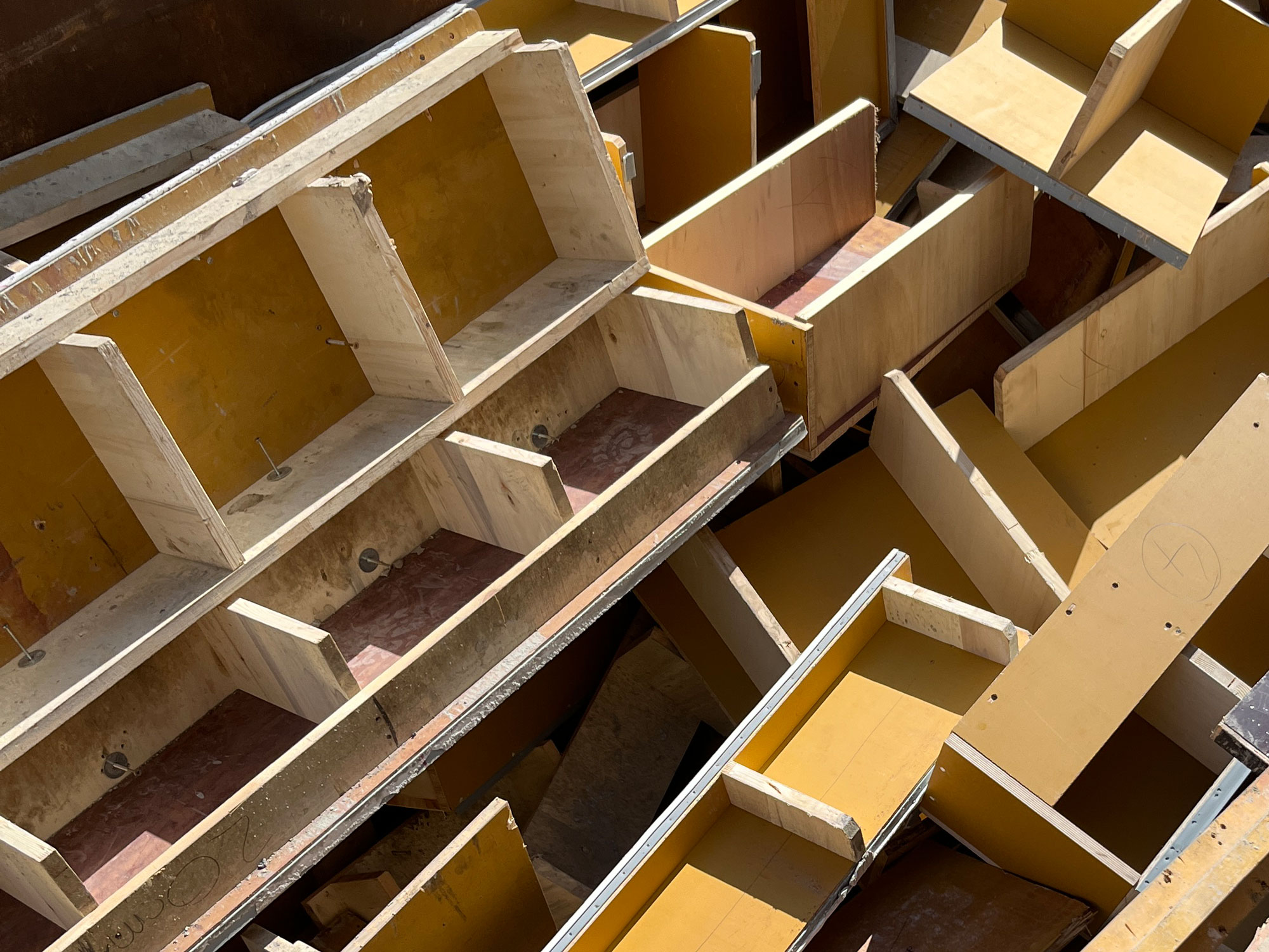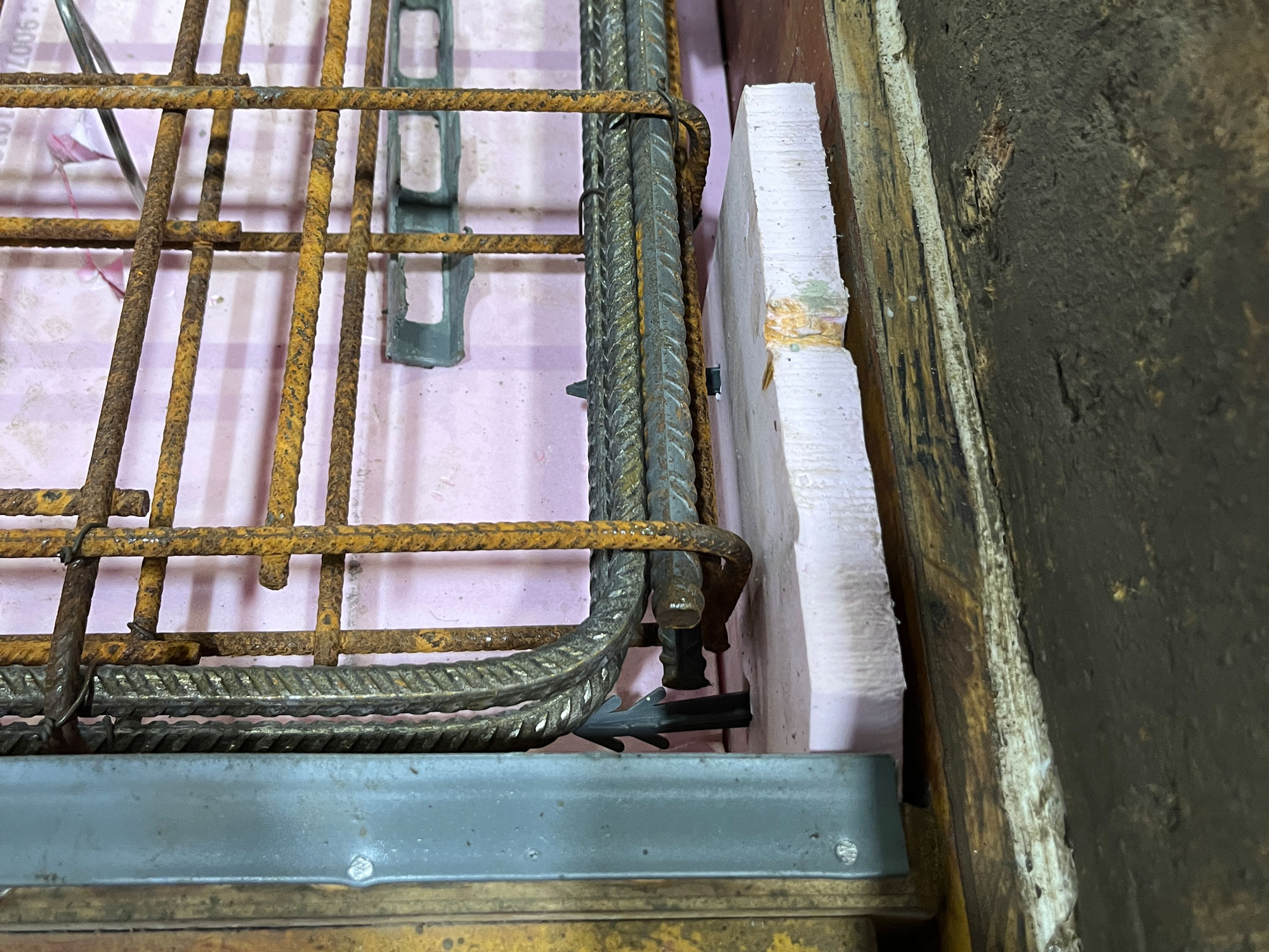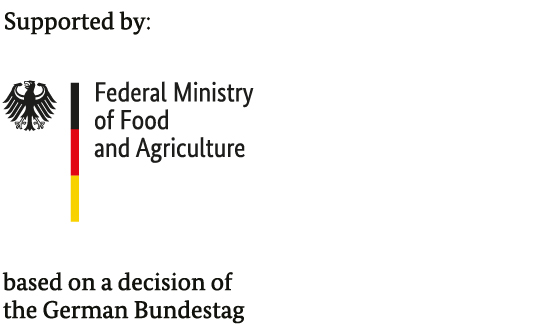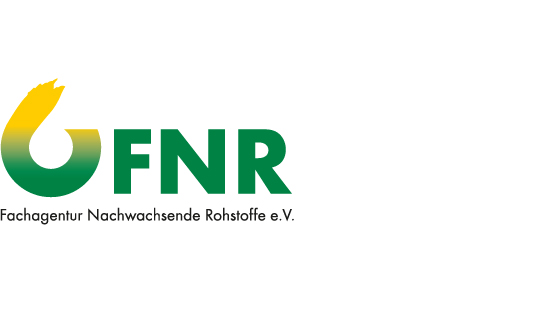WoodReFoam:
Internal recycling of formwork boards for the production of wood foams as a substitute for polystyrene in the manufacture of precast concrete components
In the manufacture of precast concrete components, formwork items made from wood and polystyrene are utilized. After being used several times, they are disposed of, which incurs costs. As a result of coatings and concrete residues, the formwork boards can currently only be thermally recycled (incineration). In collaboration with industrial partners, we are developing a solution for the material recycling: We would like to produce wood foam from the formwork boards which, in turn, can be used for the concrete formwork - as a replacement for recess formers made from polystyrene. This would allow precast concrete components to be produced more efficiently and large amounts of fossil raw materials to be conserved. Furthermore, other sustainable products could be manufactured with the wood foam, including insulation materials, packaging, wind-turbine rotor blades, and sandwich elements for buildings, vehicles, furniture or sports equipment.


In order to manufacture precast concrete components, negative molds are produced using formwork, which are removed once the concrete has hardened. They must be self-supporting and stable with a precise fit that ensures a good seal in order to withstand the high pressure of the concrete. In addition, the formwork surface must not be absorbent and must not release any substances that could hinder the setting of the concrete.
Wood is naturally absorbent and releases disruptive substances such as wood sugar. In addition, formwork boards made from solid wood are not dimensionally stable enough to produce precast concrete components with accurate dimensions. Wood-based formwork is therefore usually made from cross-laminated timber or veneer plywood with a water-repellent coating consisting of polypropylene or a phenolic or melamine resin film. Recess formers made from lightweight, dimensionally stable foams, such as expanded polystyrene (“Styrofoam”), serve as placeholders for installations such as electrics and plumbing.
The primary task of the Fraunhofer WKI is to develop a process for the production of wood foam from old formwork boards. The decisive factor for cost-effectiveness: It must be possible for the plywood formwork to be processed into wood foam, including its plastic-based glue layers and coatings. Initial preliminary tests have shown that this is possible.
As concrete residues sometimes adhere despite being coated, we will investigate within the project whether these need to be removed before the boards are crushed, or whether automatic separation of concrete residues and formwork material is possible during the crushing process. For this purpose, we are testing two different ways of crushing.
Last modified:
 Fraunhofer Institute for Wood Research
Fraunhofer Institute for Wood Research 

